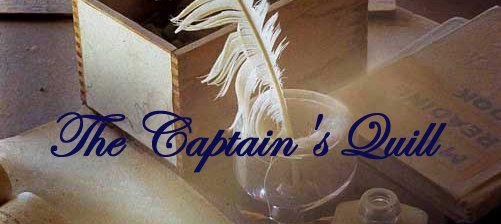The 25 May 1859 issue of The Deseret News, contained the following marriage notice:
At American Fork, Utah county, on the 27th ult., by Bishop L. E. Harrington. Mr. JOSEPH A. GEBOW, Indian Interpreter, G. S. L. City, and Miss PRUSSIA P. WALTON, of Provo.NOTE: Prussia was the daughter of Alfred WALTON,
my 4th great grandfather.
Joseph A. GIBAULT was born about 1822 in Canada. The parish register of l'Assomption Paroisse (Assumption Parish) St. Pierre du Portage, in the District of Montreal, Quebec, records the baptism of Joseph Amable GIBAULT who was born 12 Apr 1822 and baptized 13 Apr 1822. It is possible this was the same person.
| (French) Le treize Avril de l'an mil huit cent vingt deux par nous Toussigne Prêtse a été baptisé Joseph Amable née hier du legitime mariage de Jean Baptist Gibault cultivateur de calla Paroisse St de Maria Louisa Rachel Evans, Parrain st Amable Archambault, marreine dame Catherine Josepha Louisa Degoine que ont signé avec nous le pere á ont déclaré ne scavoir signer. Amable Archambault, Jos deBelleville(English-a poor translation) The thirteenth of April one thousand eight hundred twenty two by us all signed Priest was baptised Joseph Amable born yesterday of the legitimate marriage of Jean Baptist Gibault, farmer of "calla" from St Maria Parish, Louisa Rachel Evans, Patron St Amable Archambault, godmother Lady Catherine Louisa Josepha Degoine that we have signed with the father has said they know how to sign. Amable Archambault, Jos deBelleville |
By 1845 he was living among the Indians in the mountains (presumably the Rocky Mountains). He was the interpreter for Dr. Jacob Forney, Superintendent of Indian Affairs for Utah Territory.
In 1858 he was living in Great Salt Lake City, Utah Territory, where he began teaching a class on "The Snake or Shosone Dialect." In 1859 he published a booket called A Vocabulary of the Snake or Shoshone Dialect.
It appears, at least for a time, he became a Mormon, and on 27 Apr 1859, he married Prussia P. WALTON, who was born 24 Aug 1841 in Plymouth, Richland County, Ohio. (Prussia was the daughter of Alfred WALTON, an Elder in the church.) On 25 Sep 1859, Joseph advertised the opening of his "Indian School at Wardle's Hall in the 16th Ward." Cost was 25¢ per lesson.
Joseph and Prussia GIBAULT were listed in the 1860 census, living in the 9th Ward, Great Salt Lake City.
| 21 Jul 1860 Jos A. GIBAULT, age 38, indian interpreter, born in Canada Prussia GIBAULT, age 18, born in Pennsylvania |
No further record of Prussia has been found and she may have died soon after, as Joseph married Pooewet, an Indian, and about 1861 had a daughter named "Bruzasly".
On 17 Sep 1864, The Deseret News reported:
JOSEPH A. GEBOW, was arrested on the 1st inst., charged with giving whisky to Indians. The case being a plain one, Gebow begged for mercy, promised reformation of character, which there is plenty of room for, and then allowed judgment to be entered pro confesso. Fined $30.The 21 Sep 1864 issue of The Deseret News reported:
Jesse Ewbanks was brought before Alderman Clinton on Thursday last, charged with insulting the wife of Joseph A. Gebow. The defendent brought witnesses to prov that the house of Gebow was generally known as a house of ill fame, and that such propositions as were made by Ewbanks were of common occurance.Joseph left Utah and moved to Wyoming Territory about 1865. The 11 Jan 1865 issue of The Deseret News contained a list of unclaimed letters at the Post Office, including one for Joseph A. GEBOW. Joseph and Pooewet had a second daughter, Josephine, born about 1866 in Wyoming Territory.
The 1870 census listed them living in Green River, Sweetwater County, Wyoming Territory.
| 27 Jun 1870 Joseph A. GEBOW, age 48, barber, born in Canada Pooewet GEBOW, age 35, Indian, born in Wyoming Brazasly GEBOW, age 9, Indian, born in Wyoming Josephine GEBOW, age 4, Indian, born in Wyoming |
Our streets are filled with whores, thieves, gamblers, pimps, etc. The only way to purify it is to drive them out. Tear down their houses and send them where Gebow and his gang (looking toward the camp) went. That Gebow was a Mormon–Brother Gebow–was a Mormon once (laughter); but it is true though.He moved back to Utah, living in Ogden, Weber County. He was listed in the 1879-80 Utah Directory, Odgen Business Directory, under two categories (Barbers and Dentists), as J A GEBOW, opposite Fireman's Hall.
The 1880 census listed him as a widower, living with the Alonzo and Marie Stephen family in Ogden.
| 3 Jun 1880 Joseph GEBOW, age 58, barber, born in Canada |
No further record has been found concerning Joseph A. GIBAULT/GEBOW
